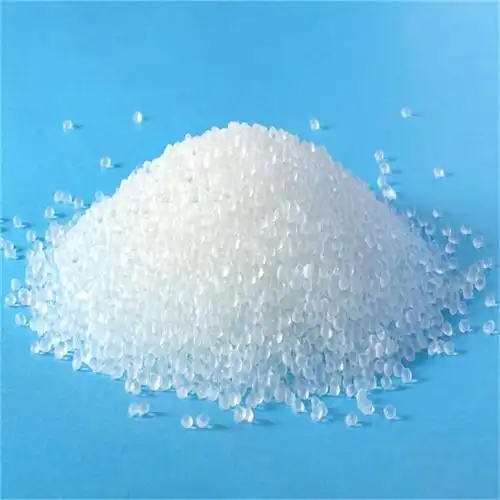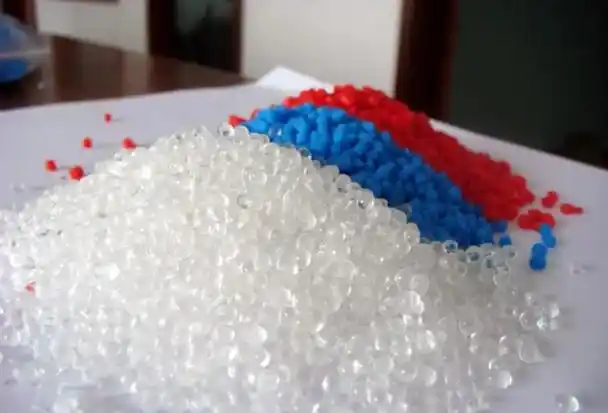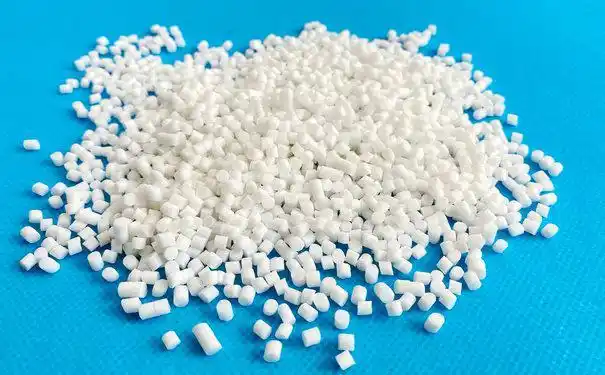As a polymer processing veteran with years of hands-on experience in setting up and troubleshooting TPE (thermoplastic elastomer) production lines, I’ve learned that the extruder is the linchpin of a successful granulation process. When I get questions about what an extruder needs to handle TPE granulation, it’s usually from someone trying to optimize their production, avoid defects like inconsistent pellets, or choose the right equipment for a new line. The extruder’s role is critical—it transforms raw TPE materials into uniform pellets ready for applications like cables, automotive parts, or medical devices. In this article, I’ll share how extruders work in TPE granulation, specific requirements for selecting and configuring them, challenges you might face, and practical tips to ensure smooth operation. My insights come from real-world projects, and I’ll keep it straightforward and actionable to help you get the best results.

The Role of Extruders in TPE Granulation
To understand extruder requirements, let’s first look at what happens during TPE granulation. TPEs are hybrid materials that blend the flexibility of rubber with the processability of plastics, making them ideal for products requiring elasticity and durability. Granulation is the process of melting TPE raw materials (base polymers, fillers, oils, and additives), mixing them into a homogeneous compound, and shaping them into pellets for downstream use in injection molding, extrusion, or other processes.
The extruder does the heavy lifting: it heats and melts the materials, mixes them thoroughly, and pushes the molten compound through a die to form strands, which are then cut into pellets. I’ve watched extruders turn a messy pile of resin, fillers, and additives into perfectly uniform TPE pellets in minutes—but only when the machine is up to the task. Choosing the wrong extruder or misconfiguring it can lead to issues like poor mixing, degraded material, or uneven pellets. So, what does an extruder need to excel in TPE granulation? Let’s dive into the details.
Essential Requirements for Extruders in TPE Granulation
Selecting and setting up an extruder for TPE granulation involves meeting specific technical and operational demands. Based on my experience across various production setups, here are the key requirements to ensure consistent, high-quality TPE pellets:
Screw Design and Configuration
The screw is the heart of the extruder, responsible for conveying, melting, and mixing the TPE compound. For TPEs, the following are critical:
Twin-Screw Extruders: Co-rotating twin-screw extruders are the gold standard for TPE granulation because they provide excellent dispersive and distributive mixing, crucial for blending polymers with fillers (e.g., calcium carbonate) or additives (e.g., flame retardants). I’ve found single-screw extruders less effective for complex TPE formulations due to their limited mixing capability.
Modular Screw Elements: TPEs vary widely (e.g., SEBS, TPU, TPV), so a modular screw with interchangeable elements like kneading blocks, mixing zones, and conveying sections allows you to tailor the setup to the material’s viscosity and filler content. In one project, I swapped out conveying elements for extra kneading blocks to handle a high-filler TPE, which eliminated clumping.
L/D Ratio: A length-to-diameter (L/D) ratio of 36:1 to 48:1 ensures sufficient residence time for melting and mixing without overheating the material. Shorter ratios (e.g., 24:1) can lead to incomplete mixing, while longer ones risk degradation.

Precise Temperature Control
TPEs are sensitive to heat, with processing temperatures typically ranging from 160°C to 240°C, depending on the grade. The extruder must have:
Multiple Heating Zones: At least 6-10 independently controlled zones along the barrel to create a smooth temperature profile (e.g., increasing from 160°C at the feed to 200°C at the die). I once had to adjust a profile mid-run to prevent a TPU-based TPE from scorching.
Robust Cooling System: Air or water cooling to manage heat buildup, especially for high-output runs or heat-sensitive TPEs like SEBS. Overheating can cause discoloration or loss of elasticity.
Accurate Sensors: Thermocouples and pressure sensors with ±1°C accuracy to monitor and adjust conditions in real-time, ensuring consistent melt quality.
Reliable Feeding System
TPE granulation often involves multiple components (resins, oils, fillers, stabilizers), requiring precise feeding:
Gravimetric Feeders: These ensure accurate dosing by weight, critical for consistent pellet properties. I’ve seen volumetric feeders cause variations when feeding sticky TPE pellets.
Side Feeders: For adding fillers or additives mid-barrel, preventing clogs in the main hopper. In a high-filler TPE run, side feeders improved dispersion and cut production time.
Vacuum Venting: TPE formulations release volatiles (e.g., from oils or additives), so the extruder needs vacuum vents to remove gases and prevent bubbles in pellets.
Die and Pelletizing System
The die and pelletizer shape the molten TPE into uniform pellets, affecting their usability in downstream processes:
Strand Die: A multi-hole die (2-4mm holes) for consistent strand formation. I prefer dies with adjustable temperature control to prevent sticking.
Pelletizing Method: Underwater pelletizing is ideal for TPEs, producing round, uniform pellets with minimal dust. Water-ring or strand pelletizing works for lower outputs but can be less consistent.
Cooling Control: Water or air cooling post-die to solidify strands quickly without deformation. In one setup, switching to underwater pelletizing reduced pellet irregularities by 80%.
Drive and Motor Specifications
TPEs, especially high-viscosity or high-filler grades, demand significant torque:
High-Torque Motor: To handle viscous melts without stalling. I once had a low-torque motor struggle with a TPV compound, causing uneven output until we upgraded.
Variable Speed Drive: Screw speeds of 200-600 RPM allow flexibility for different TPEs and output rates.
Energy Efficiency: Modern motors with VFD (variable frequency drive) controls save energy during long runs.

Material Compatibility and Maintenance
TPEs can be sticky or abrasive, so the extruder needs:
Corrosion-Resistant Components: Stainless steel or chrome-plated screws and barrels to withstand wear from fillers like calcium carbonate.
Easy-Clean Design: Modular barrels and quick-release clamps for purging between runs. Cleaning a sticky TPE residue from a non-modular barrel once cost me a full day.
Anti-Stick Coatings: Some extruders use coated screws to reduce material buildup, especially for soft TPEs.
Advanced Control Systems
Modern extruders benefit from automation:
PLC/Touchscreen Interface: For real-time monitoring of temperature, pressure, and screw speed. I rely on these to catch anomalies early.
Data Logging: To track parameters and troubleshoot issues like inconsistent output.
Safety Interlocks: To prevent damage from pressure spikes or overheating.
Here’s a table summarizing these requirements:
| Component | Key Requirement | Purpose | Typical Specification |
|---|---|---|---|
| Screw | Twin-screw, modular | Optimal mixing | Co-rotating, L/D 40:1 |
| Temperature Control | Precise, multi-zone | Prevent degradation | 6-10 zones, ±1°C accuracy |
| Feeding | Gravimetric, vented | Consistent dosing | Side feeders, vacuum vents |
| Pelletizing | Underwater, adjustable die | Uniform pellets | 3mm die, water-cooled |
Common Challenges and How to Address Them
Even with a well-specified extruder, TPE granulation can run into issues. Here are challenges I’ve faced and how to solve them:
Inconsistent Pellet Size: Caused by unstable melt flow or die clogging. Clean the die regularly and ensure stable die temperature. I fixed a similar issue by lowering the die temperature by 5°C.
Material Degradation: Overheating or excessive shear can cause TPE to lose elasticity or discolor. Use a gradual temperature profile and reduce screw speed for sensitive grades like SEBS.
Poor Additive Dispersion: High-filler TPEs can clump. Add more kneading elements to the screw and use side feeders for fillers.
Bubbles in Pellets: Trapped volatiles or moisture cause voids. Pre-dry materials and ensure vacuum venting is functional. In one run, adding a second vent eliminated bubbles entirely.
Material Buildup: Soft TPEs can stick to the screw or barrel. Purge with a high-flow resin (e.g., LDPE) between runs and use anti-stick coatings if available.

Practical Tips for Optimizing Extruder Performance
To make your extruder perform at its best for TPE granulation, here are lessons from my own production lines:
Tailor the Extruder to the TPE Grade
Different TPEs (SEBS, TPU, TPV) have unique processing needs. For example, TPU requires lower shear to avoid degradation, while TPV needs higher torque. Consult the material supplier’s guidelines and adjust screw configuration accordingly.
Pre-Dry All Materials
TPEs can absorb moisture, leading to hydrolysis or voids. Dry resins, fillers, and additives at 60-80°C for 2-4 hours before feeding. I keep a dehumidifying dryer on-site for consistent results, especially in humid environments.
Regularly Calibrate Feeders
Gravimetric feeders must be calibrated monthly to ensure accurate dosing. I once traced pellet variability to a miscalibrated feeder, which was off by 5%.
Monitor Pellet Quality
Inspect pellets every 30-60 minutes for size, shape, and defects. Use a sieve or automated inspection system to catch issues early. This saved a batch during a high-output run when I noticed irregular pellets.
Train Operators Thoroughly
A skilled operator can spot issues like pressure spikes or uneven flow before they escalate. I train my teams to listen for changes in motor noise or check melt pressure trends, which often signal problems.
Schedule Preventive Maintenance
Purge the extruder after each run to remove residual TPE.
Inspect screw and barrel for wear every 6 months.
Lubricate moving parts and check cooling systems regularly. Skipping maintenance once led to a worn screw that cost us a week of production.
Test New Formulations Carefully
When introducing a new TPE recipe, start with a small batch and adjust settings incrementally. I learned this after a new high-filler TPE caused die clogging due to overly aggressive settings.

My Personal Experience
A couple of years ago, I was brought in to troubleshoot a TPE granulation line producing pellets for automotive seals. The extruder, a co-rotating twin-screw with a 40:1 L/D ratio, was producing pellets with inconsistent sizes and occasional bubbles. After checking the setup, I found two issues: the raw materials weren’t pre-dried, and the vacuum vent was clogged. We added a dryer and cleaned the vent, which boosted output to 400 kg/hour with flawless pellets.
In another project, we struggled with a TPV-based TPE that required high torque. The existing single-screw extruder couldn’t handle it, leading to poor mixing and clumpy pellets. Switching to a twin-screw extruder with a high-torque motor and modular screw solved the issue, cutting production time by 30%. These experiences underscored the importance of matching the extruder to the material and maintaining tight process control.
Comparing Extruder Types for TPE Granulation
To help you choose the right extruder, here’s how different types perform for TPE granulation:
| Extruder Type | Mixing Quality | Output Range | Best Application |
|---|---|---|---|
| Co-Rotating Twin-Screw | Excellent | 100-1000 kg/h | Complex, high-filler TPEs |
| Counter-Rotating Twin-Screw | Good | 50-500 kg/h | Soft TPEs, low shear |
| Single-Screw | Moderate | 50-300 kg/h | Simple, low-filler TPEs |
| Planetary Extruder | Good | 100-600 kg/h | High-viscosity TPEs |
Co-rotating twin-screw extruders are the most versatile and widely used for TPE granulation due to their superior mixing and flexibility.
Conclusion
The extruder is the cornerstone of TPE granulation, and meeting its requirements—twin-screw design, precise temperature control, reliable feeding, and efficient pelletizing—is essential for producing consistent, high-quality pellets. By selecting the right machine, fine-tuning settings, and addressing challenges like degradation or poor dispersion, you can streamline production and avoid costly issues. Whether you’re setting up a new line or optimizing an existing one, these insights should guide you toward better results.
If you’re wrestling with extruder issues or need help choosing the right setup for TPE granulation, drop your questions in the comments—I’m here to help! Below, I’ve answered some common questions to get you started.

Frequently Asked Questions
1. Why is a twin-screw extruder preferred for TPE granulation?
Twin-screw extruders, especially co-rotating ones, offer better mixing and flexibility for complex TPE formulations with fillers or additives, ensuring uniform pellets.
2. How do I prevent TPE from degrading in the extruder?
Use a gradual temperature profile (e.g., 160°C to 200°C), reduce screw speed for heat-sensitive grades, and ensure effective cooling to avoid overheating.
3. What’s the best pelletizing method for TPE?
Underwater pelletizing produces the most uniform, round pellets with minimal dust, ideal for high-quality TPE applications. Water-ring or strand pelletizing works for lower outputs.
4. How often should I clean the extruder for TPE production?
Purge the extruder with a high-flow resin after each run to prevent buildup. Deep clean the screw and barrel every 1-2 months, depending on production volume.
5. Can a single-screw extruder work for TPE granulation?
It can work for simple, low-filler TPEs but struggles with high-filler or complex formulations due to limited mixing. Twin-screw is better for most TPEs.





